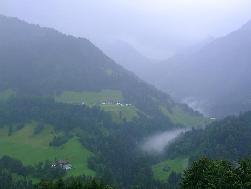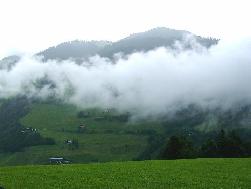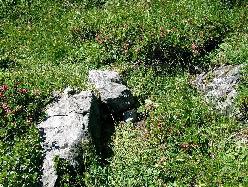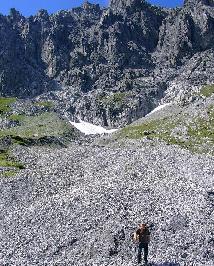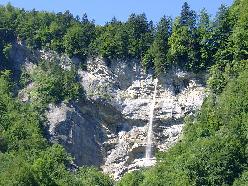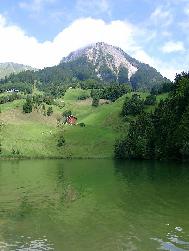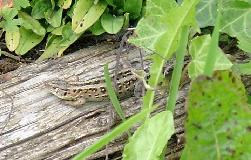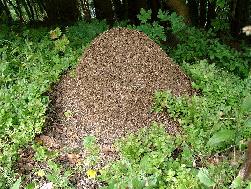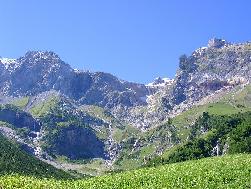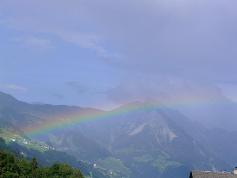 S a
l a m a n
d e
r s e
i t
e n
S a
l a m a n
d e
r s e
i t
e n |
Feuerbauchmolche
Feuersalamander
Kaukasussalamander
Kurzfußmolche
Grünl.
Wassermolch
Molch
Register
AG
Urodela
DGHT
Salamandra
atra atra
At the end of August, 2004 I made a trip to "Salamandra atra country" (the
Alps in Austria, Vorarlberg, Great Walser valley, Raggal) with my youngest
daughter.
Already at the first day we found our first Alps Salamander direct at the "main
street" to Raggal (900m NN). Main street here means, that two cars (coming towards)
are able to pass - if they drive slow.
A female with a juvenile:
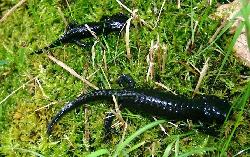
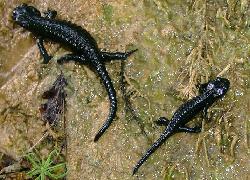
When my daughter took the salamanders, the female splashed out here salamandrin
(some cm).
The juvenile:

And the very inconspicuously Habitat – very wet place:
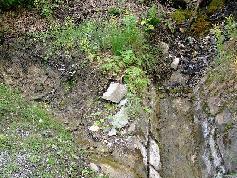
Near our campsite we found this Salamandra atra atra male (1000 m NN). He showed a typical
defence behaviour – making stiff and great, presenting its parotids:
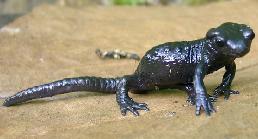
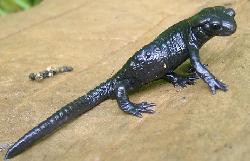
At adequate places, Salamandra atra is not rare here.
But also other interesting animals can be seen. So only some metres away from
this Salamandra atra we found a lizard - Lacerta agilis. While trying to catch it for
making photos we saw this Triturus alpestris:
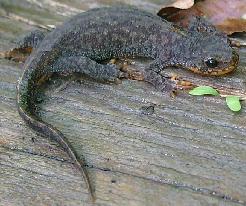
And its belly:
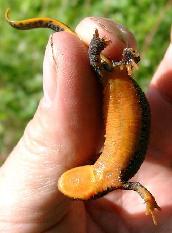
Or this tiny Bufo bufo bufo (1 cm):
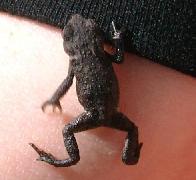
And a leg less, vivipare lizard – Anguis fragilis – which I found very often
while looking for Salamandra atra:
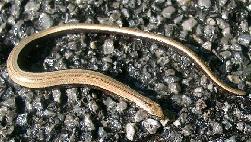
All this animals with their different claims, we found at a distance of approximate 10 or 15m.
Our campsite, Raggal - Plazzera, 900 m NN on a misty day:
Here you can see where the clouds are born:
The next habitat seems like "salamander heaven" - Luenersee, at approximate
2000 m NN.
On the mountains round the lake we found a lot of Salamanda atra. Surely the
most frequent vertebrates in this area. Sun was shining and it was good warm.
But the rocks remain cold. When sun disappeared behind a cloud, it was rather
cold within one minute.
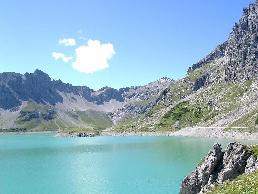
Some more photos from this fantastic habitat!
Under the rocks of this heath land we found the Salamandra atra. It is always cold there.
But the bushes all in blossom!
And only approximately 200 m away (also 2000 m NN) we could see rest of snow in
a depression over the scree.
And here a Salamandra atra atra on a rock – same place: 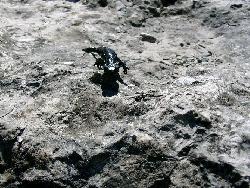
In this high, the offspring needs three years to be born.
An other juvenile near Fontanella, 1100 m NN:
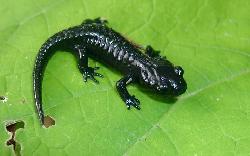
And here you see, why this species must be independent from open water.
A lot of water everywhere, but with such strong stream, that no urodela larvae
is able to live in it:
An other trip to Seewaldsee, 1100 m NN:
Here we could make a photo of the lizard Lacerta agilis:
And this ant heap:
Brandner vallay:
And this is the best weather to look for Salamandra:
Zurück zu
Salamanderseiten
...........................................................................................................................................................................
